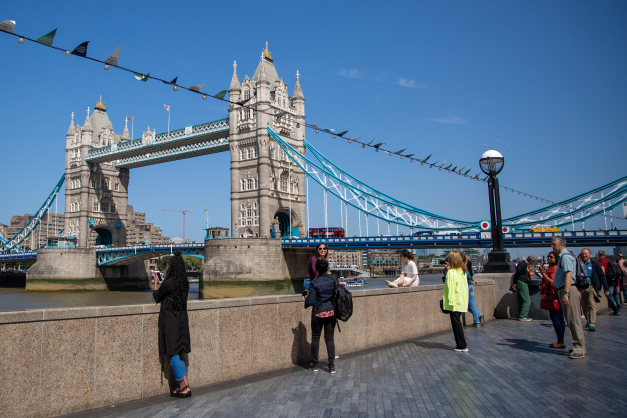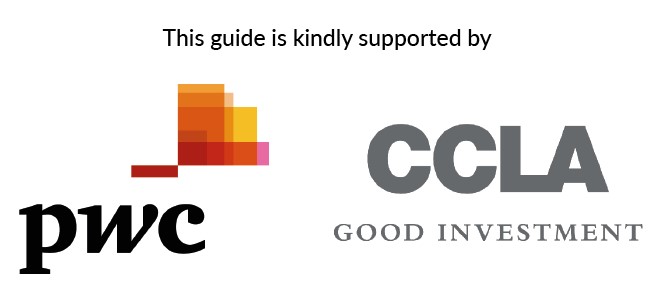
Bridge House Estates is one of the UK’s oldest charities. We’ve been bridging London, in one way or another, for over 900 years. Beginning with providing greater access for Londoners across our five iconic bridges, our vision has since expanded to tackle social and economic divides across the capital.
Today, we still maintain our bridges, but we also fund and support other charitable causes. With our trustee, the City of London Corporation, we foster collaboration between charities, foundations, policy makers and businesses, working to build a fairer, more inclusive London.
In the beginning
Our overarching climate action strategy began its life in the corporate strategy team of our trustee, the City of London Corporation, in 2019. Several departments and teams across the City Corporation and within Bridge House Estates (BHE) were already working towards their own sustainability goals, from ensuring our supply chain met our environmental targets, to our climate grants distributed by our funding team, City Bridge Trust.
The creation of a cross-cutting responsible business team, sponsored by BHE MD David Farnsworth, raised the profile of both BHE and the City Corporation’s commitment to climate action, alongside other issues such as social mobility, modern slavery, diversity and inclusion.
Made up from our staff, the responsible business team identified areas where action was needed, and measured our progress. But as the awareness and understanding of the climate emergency increased externally, we knew that internally, the time had come to play a greater, key role in the climate plan for London.
Engagement matters
Our climate working group was born, with a mandate to win over hearts and minds among staff and board members. We quickly identified that it was critical that not just staff, but our trustee – the committees that make up the City of London Corporation’s governance – were ready and willing to invest in a transformative target.
That engagement began right at the top. The policy chair and the chair of the City Corporation’s finance committee were champions, with ambition to mirror commitments set out by London Councils and the GLA (Greater London Authority), as well as other major charities and foundations.
Our board members, broadly speaking, were in support of the initiative but required a deeper understanding of some of the key issues involved: for example, the state of the market and the risks and opportunities that lay within the various funds they manage, including those held by BHE.
Our approach was to set up a series of very practical workshops to share knowledge and best practice. These workshops were facilitated by key external organisations; excellent catalysts in inspiring joined-up thinking but also extremely knowledgeable about environmental issues.
We also brought in peer organisations such as Friends Provident Foundation and the Esmée Fairburn Foundation, who have already adopted ambitious climate strategies and could share their experiences about the process to shape and embed it in their organisations.
Mapping the journey
The workshops set out to build consensus around the strategy but quickly moved on to how to implement it. Mapping out the journey over several workshops gave us the chance to keep educating, to gain understanding and consensus at different points.
There was so much to cover, it could not be done in one sitting – and participants appreciated being given the space and time to work it through. The engagement was fantastic, whatever the time of day we set the workshop for, we had a fabulous turn out, from all different committees, be it finance, grants or policy.
Getting the board on side, as advocates and ambassadors, was critical. Not least because we knew that we needed the strategy to be funded, and having the resource to back it from the start meant the difference between it happening or not.
Factoring in financial impact
A major part of the discussions was considering the funding required – noting the size of the charity, working it out – understanding that it is not just the actual cost of the strategy, but factoring in the financial impact on areas such as investments.
It is worth being upfront about that and not shying away from those difficult conversations. In our context, our trustee manages three different funds (including BHE) and so there was time invested in understanding the calls on and implications, fund by fund.
When setting targets, we initially agreed a minimum target across all funds and then each area explored how fast and far they wanted to go. This was a good example of aligning to shared outcomes but with the freedom for each area to set their own path.
Ambition and realism
It is also important to be ambitious from the start. Give yourself a realistic timescale, but ambitious goals. It is easier than going back to stretch them later and potentially having to seek additional funding to do it. We have been ambitious with our target of net zero by 2040 and this applies to everything: from photocopiers to our investments, to looking hard at our maintenance plan for all the bridges.
We are committed to being transparent and have created a publicly available dashboard showing our progress, reflecting steps achieved by BHE but embedded more widely in the City Corporations’s climate action strategy.
We want our stakeholders, staff and board members to feel proud of the progress we are making, and we want to be accountable for our efforts. We also believe in showing transparency on the risks we are facing because of climate change.
In October 2021 we published our first Taskforce for Climate Disclosure (TFCD). Currently, there is no regulatory requirement for charities to report their environmental successes, but we believe it would be fantastic to see the Charity Commission requiring this.
We are very keen to see progress on climate action being measured and reported across the sector.
Our Climate Action Strategy is on our website. If you want to learn more, please get in touch.
Written by Bridge House Estates.
Contents
1. Introduction from Richard Sagar, CFG
2. It's time to get real about ESG
3. Building a net zero strategy
4. Funding on a finite planet
5. Understanding energy consumption
6. Net zero and procurement part 1
Part 2: Steps to becoming verified carbon neutral
Part 3: What are scope 3 emissions? Why account for them?
7. Pensions and net zero part 1
Part 2: Risks and opportunities
